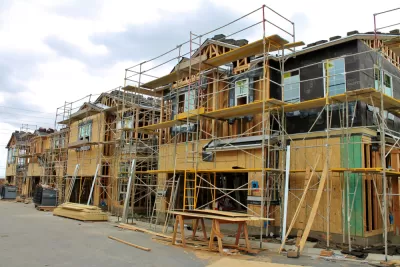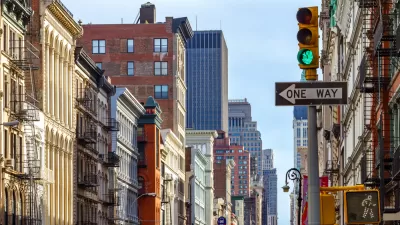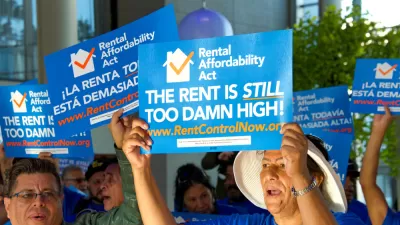California's Senate Bill 35 is touted by affordable housing advocates and other pro-development forces as an example of what good developments can happen when local obstructions are moved out of the way by the state.

More than 40 projects around California have used SB 35 since the law went into effect in January 2018, according to an article by Marisa Kendall. "The law requires most cities to fast-track residential and mixed-use projects that meet certain affordability and other standards."
Kendall is sharing the findings of analysis by The Mercury News, which concludes: "California city officials have approved or are still considering more than 6,000 homes proposed under the law — including about 4,500 in the Bay Area..."
The projects identified by The Mercury News include mostly subsidized units for low-income renters, but large mixed-income and mixed-use projects are missing from the list of projects enabled by the law.
"SB 35’s strict rules — requiring as much as half of a project be subsidized, low-income housing, and mandating a builder pay workers the local prevailing wage, for instance — aren’t worth the added expense for many market-rate developers said Oakland-based land-use attorney Todd Williams."
As noted by Kendall, a new law approved and signed in October, AB 1485, would expand the purview of SB 35 to include more middle-income projects.
FULL STORY: Is California’s most controversial new housing production law working?

Planetizen Federal Action Tracker
A weekly monitor of how Trump’s orders and actions are impacting planners and planning in America.

Congressman Proposes Bill to Rename DC Metro “Trump Train”
The Make Autorail Great Again Act would withhold federal funding to the system until the Washington Metropolitan Area Transit Authority (WMATA), rebrands as the Washington Metropolitan Authority for Greater Access (WMAGA).

DARTSpace Platform Streamlines Dallas TOD Application Process
The Dallas transit agency hopes a shorter permitting timeline will boost transit-oriented development around rail stations.

San Francisco's School District Spent $105M To Build Affordable Housing for Teachers — And That's Just the Beginning
SFUSD joins a growing list of school districts using their land holdings to address housing affordability challenges faced by their own employees.

Car-Centric LA Suburb Looks to a Train-Oriented Future
City leaders in Rancho Cucamonga, the future western terminus of the Brightline West rail line to Las Vegas, want to reimagine the city as a transit-oriented, pedestrian-friendly community.

New Alaska Bitcoin Mine Would Burn as Much Energy as the State’s Largest Coal Plant
Fueled by “stranded” natural gas, the startup hopes to become the largest in the US, and to make Alaska an industry center.
Urban Design for Planners 1: Software Tools
This six-course series explores essential urban design concepts using open source software and equips planners with the tools they need to participate fully in the urban design process.
Planning for Universal Design
Learn the tools for implementing Universal Design in planning regulations.
Municipality of Princeton
Roanoke Valley-Alleghany Regional Commission
City of Mt Shasta
City of Camden Redevelopment Agency
City of Astoria
Transportation Research & Education Center (TREC) at Portland State University
US High Speed Rail Association
City of Camden Redevelopment Agency
Municipality of Princeton (NJ)





























